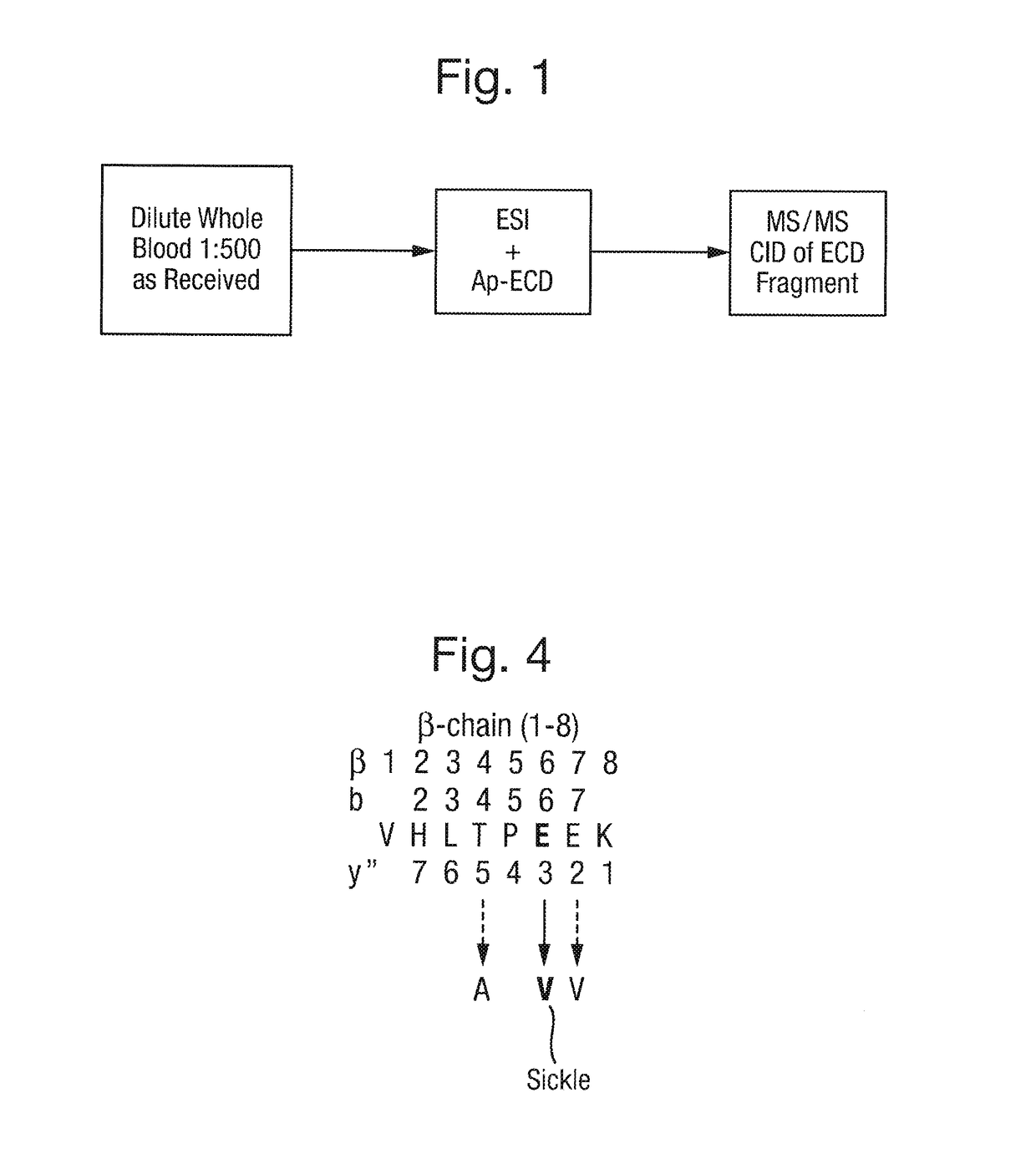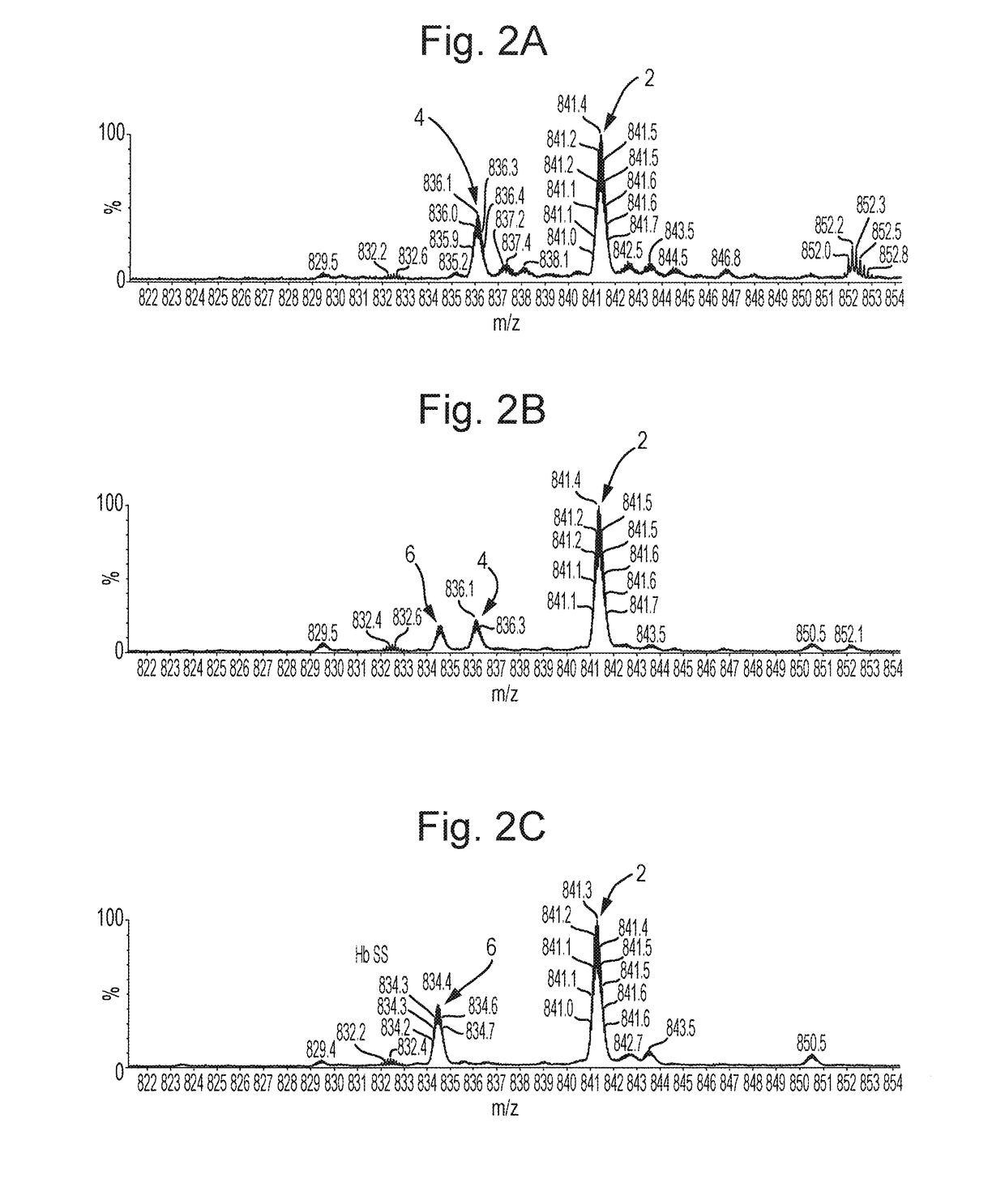Mass Spectrometry for Determining if a Mutated Variant of a Target Protein is Present in a Sample
- Summary
- Abstract
- Description
- Claims
- Application Information
AI Technical Summary
Benefits of technology
Problems solved by technology
Method used
Image
Examples
Embodiment Construction
[0175]A simplified workflow according to an embodiment of the present invention is shown in FIG. 1. The workflow comprises diluting the blood sample taken from a patient and introducing the diluted blood sample directly into a mass spectrometer. The ratio of dilution of blood to water in this example is 1:500, although other dilutions may of course be used. Components or molecules in the diluted blood sample are then ionised within the mass spectrometer. In a first mode, the resulting ions are then subjected to Atmospheric Pressure Electron Capture Dissociation (“Ap-ECD”), or Atmospheric Pressure Electron Transfer Dissociation (“Ap-ETD”), so as to dissociate the ions to form first fragment ions, e.g. to dissociate ions derived from haemoglobin proteins to form first fragment ions. The resulting spectra may be used to putatively determine the location of a mutation, as will be described further below in relation to FIGS. 3A-3C.
[0176]In a second mode, MS / MS analysis may be performed. ...
PUM
 Login to View More
Login to View More Abstract
Description
Claims
Application Information
 Login to View More
Login to View More - R&D
- Intellectual Property
- Life Sciences
- Materials
- Tech Scout
- Unparalleled Data Quality
- Higher Quality Content
- 60% Fewer Hallucinations
Browse by: Latest US Patents, China's latest patents, Technical Efficacy Thesaurus, Application Domain, Technology Topic, Popular Technical Reports.
© 2025 PatSnap. All rights reserved.Legal|Privacy policy|Modern Slavery Act Transparency Statement|Sitemap|About US| Contact US: help@patsnap.com



